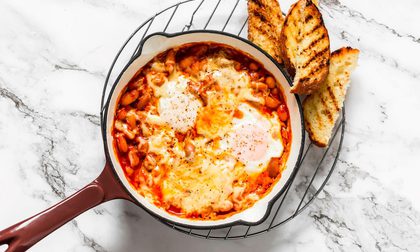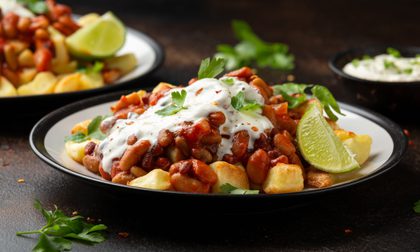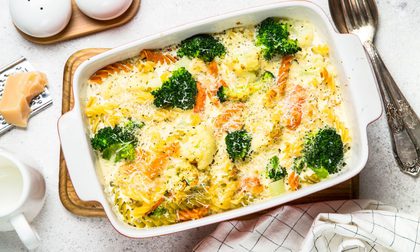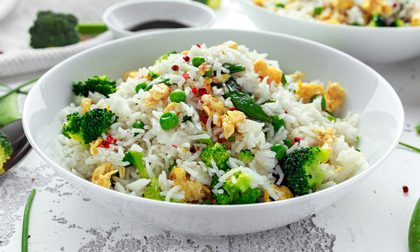The cost-of-living is skyrocketing in the Cayman Islands. Unavoidable expenses such as rent, utilities and fuel are all up, and it’s costing more and more to feed our families and ourselves. With erratic price spikes and unpredictable surges in import costs exacerbating the problem, we’ve put together some helpful hacks, tips and tricks to help make a tight budget stretch that little bit further during these difficult times.
On This Page
Understanding What's Going On
Though prices in Cayman have been, on average, higher than in other parts of the world, the rising cost-of-living is not exclusive to Cayman. Both the UK and US have experienced significant price increases across the board, and since Cayman imports most goods from the US, this naturally has influenced Cayman’s prices.
Needless to say, the pandemic has had a monumental impact on the global economy for the past few years, the repercussions of which are still being felt. Firstly, there are labour shortages in key industries such as trucking, fruit-packing and meat-packing, which have caused supply chain and shipping challenges. Not to mention the significant rise in oil prices, largely caused by geopolitical tensions between Ukraine and Russia. These price increases in oil and electricity have had a knock-on effect on shipping and supply chain costs.
Across the world, ongoing lockdowns and quarantine periods kept businesses closed and populations across the globe were restricted to staying indoors, unable to go out and spend their disposable income. Because of this, many people have been able to save money, meaning they had more money to spend once lockdowns were eased and businesses re-opened. Once released, consumers had a desire to spend and started buying more goods and services whilst the supply was still limited. In Cayman, the government unlocked pensions, allowing people to make one-off withdrawals as a provisional measure due to the economic impact of the pandemic. In addition, a pension holiday was announced, meaning employers and employees did not need to make their otherwise mandatory pension contributions each month. For the fortunate few who kept their jobs, these monthly savings meant extra disposable income, and like in other countries across the world, this sudden increase in consumption was crippled by constrained supply which helped drive prices up.

In Cayman, we have seen the return of tourists, work permit holders and cruise ships following a relaxation in COVID-19 rules. This sudden increase in people on the Island contributes to reduced supply, rising demand and, therefore, escalating prices. As these costs have continued to rise, wages have remained largely stagnant. With businesses still struggling, these additional costs mean employers are generally unable to increase wages to help match inflation.
Action to Take
Though, given time, inflation will slow and these issues should resolve, it's highly unlikely to be overnight. In the meantime, as prices remain high in Cayman’s supermarkets, we’ve put together a list of simple actions to take to buy smart, cook smart and eat smart. Incorporating a few or many of these everyday tips into your day-to-day life at home could help you save money, reduce waste and maybe even stay healthy. And, when inflation in the Cayman Islands begins to plateau, you’ll be able to continue using these handy hints to help you save into the future.
Buy Smart
- Write a shopping list (and stick to it!) – Don’t underestimate the humble shopping list. Write a list based on what you have in your cupboards/fridge/freezer already.
- Don’t shop whilst hungry – You’re much more likely to spend more money and buy unhealthy foods.

- Plan meals to reduce waste – Only buy what you’ll actually eat (this is where that helpful shopping list comes in). Write specific ingredients on your list and amounts you need. Don’t over buy, and freeze what you cannot use.
- Buy frozen – Fruit and vegetables retain all their nutrients when frozen, they’re pre-chopped, last longer and are often cheaper.
- Don’t be fooled by the label – Don’t let the label choose for you. Experiment with cheaper brands (just make sure to check ingredient lists for additives and nasties).
- Crunch the numbers – As you shop, do some number crunching. Use your phone, a calculator, or encourage kids to exercise their mathematic skills to add up your trolley total. It will make you double check you definitely need everything that’s in there before checking out!
- Pay in cash – Paying in cash will restrict your spending and help you prioritise necessities. Take out cash each week for groceries, rather than for the whole month. This will help you spend less elsewhere on-Island.
- Ignore eye-level items – Look for cheaper alternatives above and below eye-level. You’ll be surprised at the size of the price difference.
- Bring your own bag – A simple but effective one! Spend less and help reduce plastic waste.
- Leave the over-spenders at home – If you know your children have a tendency to add unnecessary items to the trolley, leave them at home! If you struggle to pay for childcare, try reciprocal childcare. Ask a trusted parent to watch over your little ones and do the same for them when they need help.
- Plan meals around sale items – Search your supermarket online and on social media before writing your list. Find out this week's/month's deals and plan meals around these items. This will also save you from wandering around the store trying to find cheaper deals.
- Buy cheaper cuts – Start slow-cooking your dinner. It’s cheaper and oh so tasty!
- Beware of multi-buys – Good for non-perishables, bad for fresh ingredients. Bulk buy items that you use every day, or ones that will last.
Cook Smart
- Cook with pulses – Meatless dishes don’t have to just be cauliflower and Brussels sprouts! Pulses are one of the cheapest items in the supermarket. Pulses include: baked beans, lentils, chickpeas, garden peas, black-eyed peas, kidney beans, butter beans, haricots, cannellini beans, flageolet beans, pinto beans and borlotti beans. Buy dried rather than canned to reduce the cost further!

- Know your kitchen – Raid your pantry, you may find you have enough ingredients to make a full meal. Organise the food in your cupboards/fridge by use-by dates to reduce waste.
- Redefine dinner – Don’t be afraid to serve simple meals several times a week. Have breakfast for dinner to make ingredients stretch and to ensure you use ingredients before they expire – kids will never be disappointed!
- Batch cook – To reduce waste and create bonus dinners/lunches, start batch cooking. It’s like getting a free meal! Why not set aside an afternoon or evening to batch cook?This way, you’ll have a freezer full of meals to choose from and less ingredients going bad in your kitchen.
- Keep an inventory – This one might seem a little too far, but it’ll keep you from finding a rotten cucumber at the back of your fridge! Keeping a list of products on your fridge reminds you what you have to eat. Each time you fill the fridge, write a list. When you use items, cross them out and when you buy new items, write them down. This way you always know what ingredients you already have on hand to cook with.
- Store correctly – By simply following storage instructions, you can get the most use out of your ingredients. Use reusable storage containers, keep those fresh herbs in water, and freeze that bread before it goes blue!
- Get all your base spices and herbs – Once you’ve got a good collection of basic herbs and spices, you’re well equipped to make a plain meal taste delicious. Not to mention dried herbs and spices are largely very affordable.
- Substitute ingredients for ones you have – Another simple but effective one. There’s no reason you can’t replace broccoli with cauliflower, green beans with peas or crème fraiche with sour cream. Following a recipe is helpful, but it’s more fun and more helpful to experiment. You might discover a brand new dish!
Eat Smart
- Eat more veggies – The rise in supermarket prices has largely affected fish, meat and dairy products. You don’t have to become a total herbivore to experiment with veggie or vegan recipes. Join the hoard of families who have adopted 'meat-free Mondays'.
- Control your portion size – Try weighing or measuring staples such as pasta and rice to control portion size and reduce waste. This will also help with stretching meals further and improving your diet.

- Toddlers can eat the same – There’s no reason your toddler can’t eat the same meals as the rest of the family. Rather than buying extra food, encourage them to eat the same foods as you. If needs be, use a food processor to mush the food up. This is much healthier for them and puts less pressure on the purse strings.
- Utilise Cayman’s Happy Hours – If you do want to eat out, which we all do at times, make use of the vast amount of happy hour options available Island-wide. There are so many great deals to choose from.
Helpful Recipes

Baked Bean Shakshuka
Breakfast for dinner!

Five Bean Chilli
Use any beans, and don’t forget that this is a great one to batch cook or freeze.

Veggie Mac 'n' Cheese
Using up those ingredients at the back of your cupboard.

Fridge-raid Fried Rice
Vegetarians can substitute the chicken, and any leftover veggies can be used.





